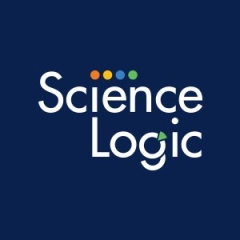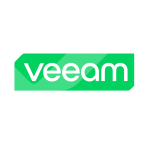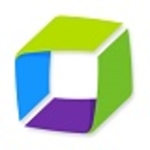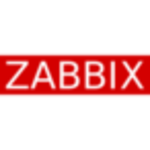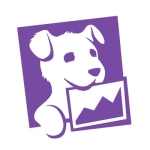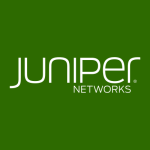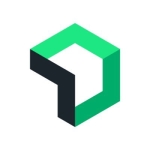What is most valuable?
The most valuable features of any kind of monitoring system go to its core functionality. I have to know when my customers are down, I have to be able to report back to them on SLAs, I need to be able to also report back to them on capacity. It's no longer just a question of being up or down but how up or down something is in terms of its available capacity and our ability to react to that in a timely manner.
HOSTING's vision of the unified cloud is one in which customers don't have to tightly couple the services that they want from us with a platform that we choose for them. We want the customers to have the ability to deploy their applications across whatever platform they want, be that AWS, or our VMware platform, our Hyper-V platform. We want to be able to provide them consistent experiences across all of those. Then the integration points that ScienceLogic offers, which each of those key external and internal partners are absolutely critical to us.
How has it helped my organization?
The two main benefits are, one, integration with their API in our customer portal has allowed us to create some really interesting visuals. It's allowed us to create some really engaging capacity monitoring interfaces. The other side, too, is they're dashboard-ing and reporting, which through Single Sign-on, we've been able to integrate directly into our portal, so we can expose their dashboard-ing capabilities directly to our customers. The job of an MSP these days has really changed from just being a hoster to really being an aggregator and a trusted advisor. In the insights that their platform allows us to deliver really enables to do that.
What needs improvement?
Things that are key for me are really good turnkey integration with external platforms. I'm seeing a lot of interest in lately from our customers is synthetic transaction monitoring. Introducing that into their continuous monitoring practice, so seeing them integrate with folks like Ghost Inspector or AlertSite that do synthetic transaction monitoring, as a service, as a platform, and being able to ingest data from their APIs the same way they do with AWS and other platforms would really be key in giving a true 360 view of a customer's application health.
What do I think about the stability of the solution?
EM7 is a very, very stable platform. Mileage always varies when you're a service provider. You know that whatever technology you pick for any given solution is going to be, you're going to be pushing. The ScienceLogic team has been phenomenal in working with us to allows the system to scale to exactly what we need.
What do I think about the scalability of the solution?
Scalability is key. One of the biggest challenges that you have with monitoring systems is just simply dealing with what I call the signal-to-noise ratio. There is a tremendous amount of data coming in and the system needs to be able not only to scale to address the full install base that we need it to, but it also needs to be able to ingest all of that data and bubble it up to our monitoring teams in a way that is understandable and actionable so that we are really able, as I said, to separate the signal from the noise. Their platform really enables us to do that.
How are customer service and technical support?
The support's been fantastic. What I really like with working with a company that has a technical founder is that it really is a company that really cares about making great technology. That's not necessarily the case for what we've seen from past monitoring vendors, so it's been really refreshing working with the ScienceLogic team. It has a great technical team and also a great technical vision.
Which solution did I use previously and why did I switch?
We knew the best way that you always know something because your customers are saying to you. My boss says to me a lot, "Our customers are the ones that should be pushing us. Our customers should always be pushing us to be better." That was in a sense that's exactly where we were. We were in a situation where our ability to integrate new features into our monitoring platform was taking way too long and was way too cumbersome. Our ability to keep that system current at a current patch level with a vendor was unbelievably complicated. Realistically speaking, we had a problem that we couldn't even deliver the baseline of services, let alone innovate. You hear that from your customers. After you've heard it from two or three really big customers, you know I've got to dos something about it.
It was heavily architecturally skewed because we understand monitoring systems. I know a lot about the architecture behind the way good monitoring systems work. Having seen a lot of bad monitoring systems, I really knew what we were looking for in terms of a distributed architecture in terms of the ability for collectors to dynamically fail and devices to be able to move within a collector group dynamically, in terms of not storing local state data out on collectors and warehousing it internally. Those are some of the key components there. But, outside of that it was your core components. I want to be able to do ICMP, HTTP, TCP, SNMP, those are all my basic stuff. I also want to have turnkey integration with all of the external platforms to really go and enable the unified cloud. That's existing integration with AWS, integration with Azure. More importantly, a vision that aligned with our own. We have a very clear and a very defined vision about the unified cloud and where we're taking that, so it's critical that's to partner with vendors that share that vision.
How was the initial setup?
Nothing we do is straightforward. That's just the nature of operating at the scale that we do. I can tell you that over the course of nine months with a tremendous amount of input from their and support from their team in terms of design and implementation and architecture, we were able to migrate, I want to say, around fifteen thousand devices from a legacy monitoring platform into EM7 without missing a beat. You think about a nine-month project, you consider the amount of time that went into that. Nine months sounds long, but I don't think it is. I thinks that's probably less than it should have taken, and certainly less than it would have taken with other platforms.
Which other solutions did I evaluate?
There were three vendors that were a part of that evaluation, yes. Testing the system scale is not easy. There's a certain amount of art to that to extrapolating out how a system will behave at scale because we weren't going to roll the entire thing out just to see how it worked. We spent a lot of time doing functional testing and also a lot of time doing integration testing. It's key for us to be able to integrate with any platform that we're building both on the service delivery side, so we have the ability to automatically ingest devices that we provision in whatever cloud automatically into our ScienceLogic environment. Then be able to bubble performance and applicable alert data about those devices up into our customer portal. I would say the key evaluation areas were going to be around the presentation layer, so the ability for us to be able to leverage their dashboard-ing, their reporting capabilities, natively, which we integrated with through a single sign-on, their ability to expose an API that had a parity with their user experience.
It's interesting because whenever you ask somebody, "How's your API?" They always say, "Our API's great." Really the question you want to ask them is, "Does your API have parity with your UI? Is there anything your UI is doing that is special or hidden or doesn't use your API?" If the answer's yes, then you got to dig into that. Basically, what we found is that there is tremendous completeness with their own UI and their API. Realistically, we were able to build out a very, very full and rich experience in our own portal that we could expose up to customers. I would say the other real criteria there was around multi-tendency. A smart person once said, "Nobody builds products for service providers. We figure out how they work and we make them work the way we want to." In fact, it was my old boss that said that.
I would say that of the platforms that we evaluated, ScienceLogic was most built for service providers. They really had a good grasp around multi-tendency, a good grasp around organizational relationships with the monitoring system. We didn't have to force the data model to understand how we wanted it to think, it was well understood. We were very happy with our ability to integrate our customer base into that.
What other advice do I have?
No platform is perfect, and if anybody tells you their platform is perfect, they're probably in sales. Realistically speaking, when you talk about the technology behind a platform, you talk about entering into a partnership with somebody like this to operate at this kind of a scale, it's what I call a five-year decision. It's something that I want to do and then not have to think about for at least the next five years. You don't do that with just technology. There's no one technology that you're going to do, that you're to select that's going to give you that. The package really is the technology and the people that are behind it. The team at ScienceLogic has done a phenomenal job helping us to scale and helping us to tackle any hurdles that we run into.
Disclosure: My company does not have a business relationship with this vendor other than being a customer.

